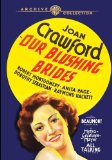| Reviews & Columns |
|
Reviews DVD TV on DVD Blu-ray 4K UHD International DVDs In Theaters Reviews by Studio Video Games Features Collector Series DVDs Easter Egg Database Interviews DVD Talk Radio Feature Articles Columns Anime Talk DVD Savant Horror DVDs The M.O.D. Squad Art House HD Talk Silent DVD
|
DVD Talk Forum |
|
|
| Resources |
|
DVD Price Search Customer Service #'s RCE Info Links |
|
Columns
|
|
|
Our Blushing Brides (Warner Archive Collection)
Entertaining twaddle. Warner Bros.' Archive Collection of hard-to-find cult and library titles has released Our Blushing Brides, the 1930 smash hit romantic drama from Metro-Goldwyn-Mayer, starring Joan Crawford, Robert Montgomery, Anita Page, Dorothy Sebastian, Raymond Hackett, John Miljan, Hedda Hopper, Albert Conti, Robert O'Connor, and Edward Brophy. The unrelated last part of the so-called "Our" trilogy of Roaring 20s "jazz baby" movies M-G-M fashioned for Crawford, Our Blushing Brides ditches the dancing flappers here and focuses on three Depression-era chippies looking for love and money (and not in that order) on the mean, unforgiving, un-enforced Code streets of New York City. Even back in 1930 Our Blushing Brides was hackneyed junk...but you can't deny its weird mix of snappy, lurid melodrama, cliched, cynical morality tale, and ludicrous Metro opulence isn't fascinating. No extras for this pretty good fullscreen 1.37:1 black and white transfer.
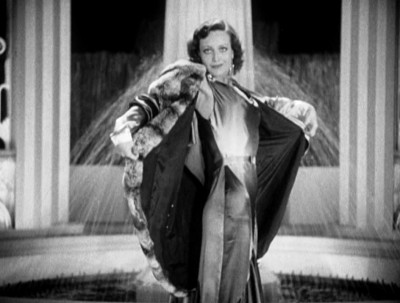
New York City, 1930, as the Depression deepens. At the massive, swank Jardine's Department Store, roommates and pals Jerry March (Joan Crawford), Connie Blair (Anita Page, sweet), and Franky Daniels (Dorothy Sebastian, tart and amusing), punch the time clock and hit the sales floors as they keep their peepers peeled for the kind of man who can deliver them from their proletarian drudgery...and right into domestic drudgery if they're not careful, 'cause he's gotta be rich. On the perfume counter, sweet, moony Connie only has eyes for callow dreamboat David Jardine (Raymond Hackett), the youngest heir to the department store empire. They've been dating, with David pressuring love-sick Connie to do the right thing and let him put her up in her own apartment, just like any other self-respecting whore. Smart-assed tramp Franky is stuck in no-men-in-sight woolens, so the minute lodge owner Martin W. Sanderson (John Miljan) crudely asks for a date and then some, while placing an order for $500 bucks in blankets--plunking down cold, hard lettuce--practical love-for-sale Franky hands over her address pronto. Finally, sadder-but-wiser gal and store mannequin Jerry knows both kinds of men: the rats who only want sex from a girl, and, um...there are not other kinds of men. Sure she's attracted to smooth, creepy playboy Tony Jardine (Robert Montgomery, inexplicably repellent), who, for some reason, keeps staring at Jerry every time she dons revealing lingerie. But she's not getting involved because she knows that even nice guys lie about love to get what they want (you know what "what" is...). Soon, however, two of the girls will succumb to the Supreme Temptation, while Jerry holds out (oops), with tragic consequences for all.
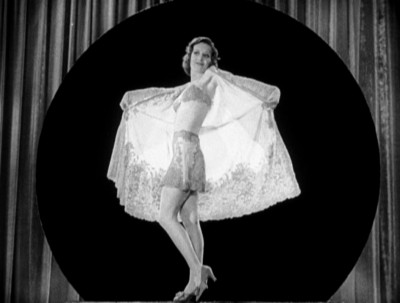
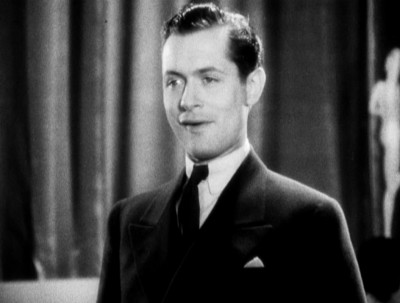
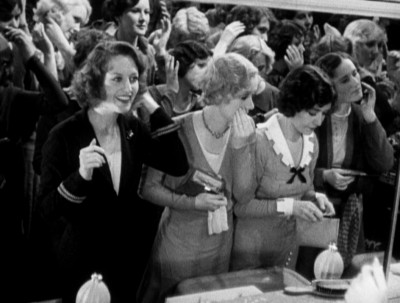
An entertainingly screwed-up exercise in faux-gritty romantic fantasy, Our Blushing Brides was the second big, big hit for Joan Crawford in 1930 (Montana Moon with Johnny Mack Brown landed first), both of which signaled a change in the way M-G-M saw their increasingly valuable star. Monomaniacally ambitious Lucille Fay LeSueur, after a dirt-poor upbringing and years of drudgery in nickel-and-dime traveling revues, had somehow managed to carve out a progressively higher-profile career for herself at Metro after being signed by the studio in 1925 (where she was eventually renamed "Joan Crawford"). Relentless self-promotion at Hollywood and New York social functions and at high-profile events like dance contests kept her name in the papers, without any help from an initially disinterested Metro. Not one to pass up all that free publicity gravy, M-G-M gradually eased Crawford into more substantial roles, including a well-received turn in 1925's Sally, Irene, and Mary, where her considerable dancing skills were highlighted. Working with popular male stars like Lon Chaney, Sr., John Gilbert, William Haines, and Ramon Novarro pushed Crawford up through Metro's rankings, but once the studio placed her in 1928's Our Dancing Daughters, a role that seemed to match the public image Crawford had crafted for herself--that of the modern "jazz baby" flapper who challenged old notions of "lady-like" behavior with her dancing and drinking...but who was actually "moral" underneath the glitzy shellac--her star status rose considerably. A high-profile marriage to Douglas Fairbanks, Jr. followed (which certainly didn't hurt publicity-wise), with more hits at the box office, too, including the thematically-related "sequel" in-name-only to Our Dancing Daughters: Our Modern Maidens, Crawford's last silent, and an even bigger pre-Code "jazz baby" hit than its predecessor. The circumstances around the timing of Our Modern Maidens debut, however--a month after the stock market crash--no doubt helped influence Metro's decision to move Crawford out of her now soon-to-be-outdated flapper image, refashioning her into a more mature, all-purpose leading lady. Our Blushing Brides's title may have smartly piggy-backed on those two earlier Crawford hits, but its poor, hard-working, cynical heroines are a far-cry from the carefree society flappers of Our Dancing Daughters and Our Modern Maidens.
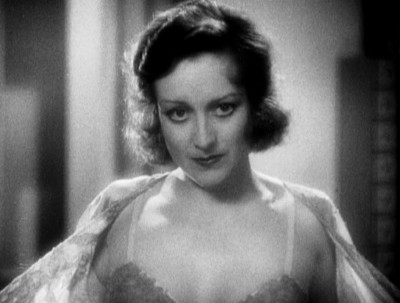
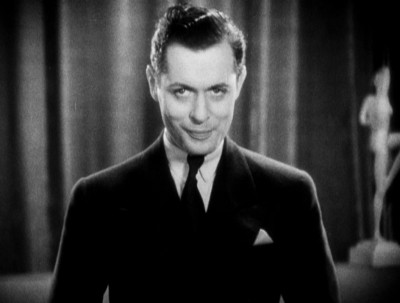
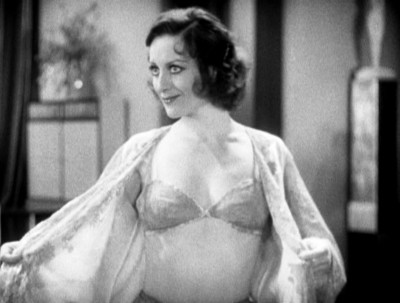
Still...let's not get crazy. This is Louis B. Mayer's Metro we're talking about, after all, so the depiction of Depression-era chippies on the lookout for any kind of sensation after their deadening workday, struggling all the time in life and love, is if you had to bet, probably going to come out sugar-coated and melodramatic, rather than grim and thematically complex. The "flaming youths" of Our Blushing Brides aren't former flappers fallen on hard times; we're told they came from small towns to the big city, where they've yet to find love or money--just hard work and tough breaks in the boys' department. This is M-G-M's version of the Great Depression, where despite the women's talk of finding a rich husband or lover to take care of them, the girls aren't putting out in order to eat (naive Connie gives it up for love, while Franky has sex for fun and more money). Unlike millions of Americans at the time, they're not starving; their biggest hardship is finding a can opener for their steady meals. They have a huge Metro-designed apartment for three supposedly struggling working girls (even Jerry's later declasse single she rents is large and homey and spic 'n' span). Most importantly: they have jobs--the single most elusive item in 1930 America. In M-G-M-Land, the Depression ain't so bad. If you're careful, you can spot some proto-Commie, anti-capitalism crap from co-scripter John Howard Lawson (with pro Bess Meredyth and Edwin Justus Mayer along for the ride), such as the vaguely implied notion that the interchangeable salesgirls (they're addressed by their employee numbers, not names) are easily exploitable proletarian prey for the store owner's super-rich playboy sons. When society babe Hedda Hopper asks Montgomery about pretty mannequin Crawford, "How do you like that model, Tony?" she could just as well be asking him about the newest Cadillac he's going to purchase (there's a perverse little twist to the end of the scene, where Hopper makes Crawford show her the goods again, as she grips Montgomery's hand in anticipatory proprietary pleasure). But in the end, there's no way politics and economics are going to survive this plush Metro onslaught of gorgeous melodramatic suffering.
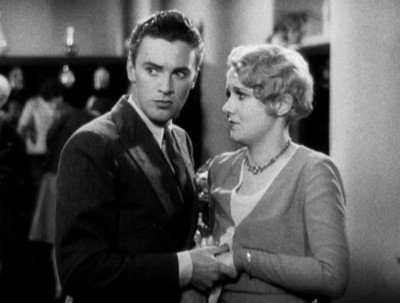
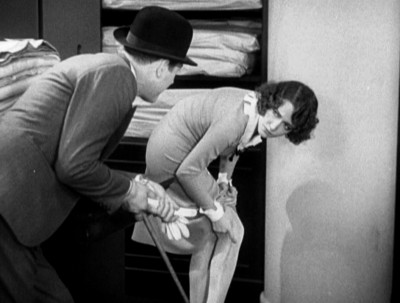
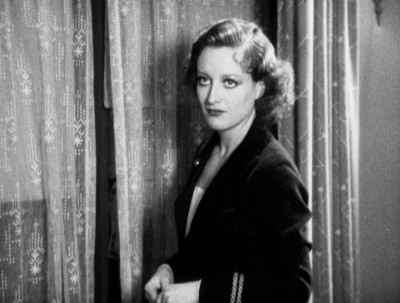
And it is all rather slushy and unbelievable in the end, despite presenting superficially rebellious taunts to the Production Code. The minute tough cookie Crawford opens her mouth and spits out something sardonic about love and money, we know she's really the sweetest and most romantic (and of course, wounded) of the bunch. We know that no matter what happens, she's going to get her department store heir in the end, and she's going to do so by staying "clean." Sure it's bracing to hear Franky say, "We're not going to do anything about [our financial/societal situation] while we continue to be dumb...and virtuous." But no matter how much skin and dirty talk shows up here, Our Blushing Brides is essentially Code to the bone--at least in terms of its central moral compass--regardless of any deliberate skirting on the scripters' parts. SPOILERS ALERT Good time girl Frankie is spared anything more than general humiliation over drunkenly marrying a thief because she did actually get legally married: it may have been dumb...but it was okay under the law and God and Will Hays. She skedaddles back home, bored to tears but finally safe, to milk cows with Ma and Pa. Naive dope Connie throws morality to the winds when she accepts smooth user David's offer to be a "kept woman." If this isn't bad enough, she comes to enjoy the illicit life of luxury she leads and that's what really lowers the boom on her (she didn't have the decency to be ashamed): she's soon drinking rat poison, checking out when the biggest cowardly rat of all, David, is forced by Tony to come back and offer one last lie to comfort the poor, dying girl. And then there's Jerry, who comes out of the movie squeaky clean because she didn't sleep with Tony after all those uncomfortable dates (it doesn't matter what we suspect she did in the past; during the movie she might as well be a virgin). She knows men--both "good" ones and "bad" ones--are pigs, and she's not going to slop them just to keep the squealing down (Crawford has an excellent scene where she discusses just that aspect of men's sexuality--it sounds like it could have been written today). It's tempting to want to see Our Blushing Brides as another daring example of Code-lax sexuality on screen, which it is at times, admittedly, at least in terms of the plot mechanics. However, in terms of the moral and ethical underpinnings of the three women's actions, and especially the resulting payoffs in terms of their punishments and rewards, Our Blushing Brides is as square and old-fashioned as a Sunday church picnic.
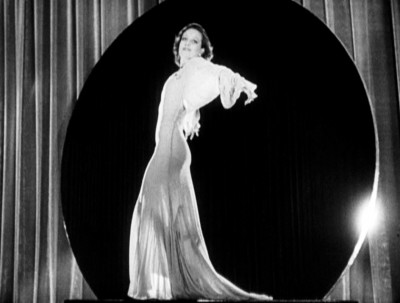
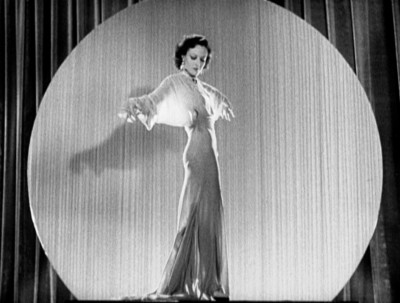
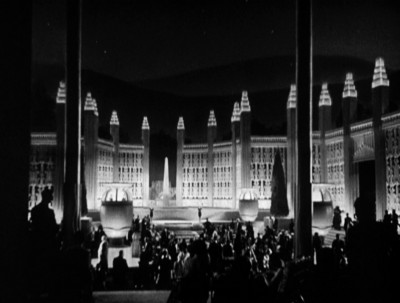
So that's why you have to focus on Our Blushing Brides' deliciously whacked-out schizophrenia, because nothing else makes much sense. Odd right down to its misleading title (unless someone was trying to be sarcastic, which I somehow doubt with Metro), Our Blushing Brides' tone is all over the place, with spectacular opulence dropped-in and married to ersatz Depression-era drama to delightfully daffy effect. One minute Crawford is opening up a can of tune with a hammer and nail, the next she's in Montgomery's impossible--and I mean impossible from an engineering standpoint alone--Art Deco treehouse that appears to weigh about 400 metric tons, with those marble floors and chrome fixtures...and a motorized drawbridge staircase (that's some strong tree). One minute Crawford is extolling the virtues of "nice" guy Montgomery's way of seducing a girl, the next she's fighting off his crude, awkward advances (how they made such a charming performer like Montgomery so viscerally unappealing here is beyond me, but the movie features seemingly endless shots of Montgomery licking his chops at prey Crawford...who looks like a trapped animal). One minute the viewer is given a rather dynamic, semi-documentary view of all the department clerk babes noisily dressing and primping below in the store's bowels, shoving each other aside to get a tiny slice of a big mirror (that dolly shot through the women's locker room, picking up and dropping their conversations, is quite nice...and from a completely different movie), and the next, all those sob sisters out in the audience without two nickels to rub together are given not one but two extended fashion shows of the latest couture they'll never be able to afford. You never know where the hell Our Blushing Brides is going, or what it's going to say when it gets there. And once you realized how compromised it all is...that herky-jerky senselessness becomes fun.
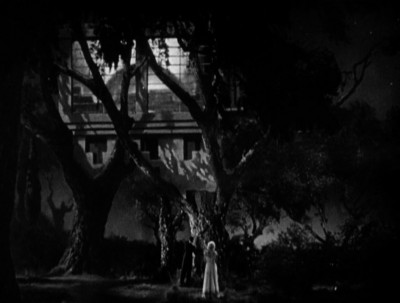
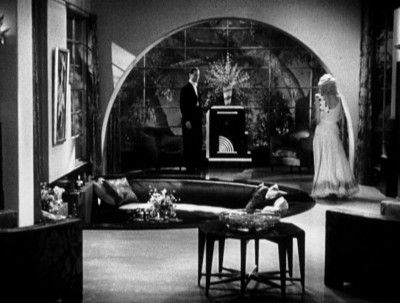
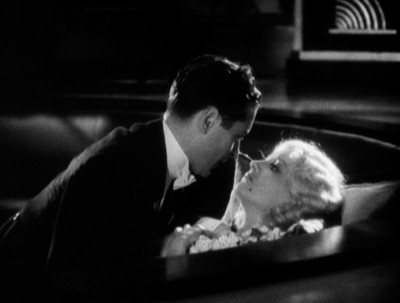
These fashion shows (particularly the first one, with Crawford in knee-weakening lingerie) are unquestionably the most memorable scenes in Our Blushing Brides, if only for their unabashed arbitrariness. Thankfully, the first one makes no bones about showing up primarily just to show off Crawford's near-naked goods (skin, not immorality, was the biggest casualty of the re-strengthened Code--you can suggest and imply anything you want...except a beautiful naked body). If the only mental image of Crawford you associate is her circus clown appearance from later over-the-top turns (reinforced, obviously, by Faye Dunaway's Mommie Dearest), you really owe it to yourself to see a young 26-year-old Crawford in her absolute prime, with her flawless flapper body: lithe, with broad shoulders, flat chest, an insane rear end, and the biggest, most beautifully haunted eyes the movies have ever known. It doesn't matter if her technique wasn't quite perfected at this point (turn off the sound and a few of her scenes could pass for overly-emoted silent acting), or if that technique was overstated or even artificial. Her star power is on full display in Our Blushing Brides, with that uncanny ability the great ones have to emotionally plug into an audience like a circuit cable. Divorced now from any meaningful political, economic, or societal context (because it was hopelessly addlepated from the beginning, anyway), Our Blushing Brides in the end only has Crawford to recommend it. And she's enough.
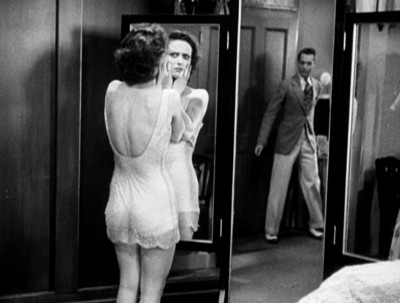
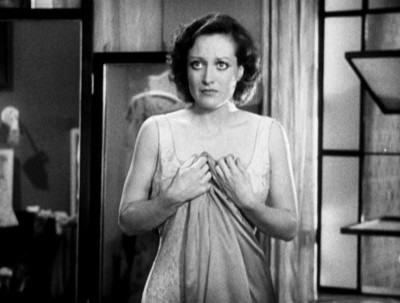
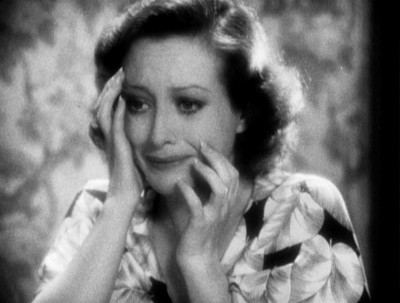
The Video:
The fullscreen, 1.37:1 black and white transfer for Our Blushing Brides isnt too bad, considering, with decent-enough blacks and contrast, a mid-sharp image, and plenty of grain at times, and screen imperfections like scratches and dirt.
The Audio:
The Dolby Digital English mono audio track has low hiss; otherwise, an acceptable re-re-recording level. No subtitles or closed-captions.
The Extras:
No extras for Our Blushing Brides.
Final Thoughts:
Goofy romantic melodrama masquerading as goofy Depression-era grit. You won't believe a minute of Our Blushing Brides, but you'll sure enjoy it, with its crazy schizo lurchings from Art Deco treehouses to "squalid" M-G-M slums, and from loose girls looking for money and love, to cynical chippies with hearts of gold. Montgomery is uncharacteristically icky, but Crawford, draped or undraped, is arresting. I'm recommending Our Blushing Brides.
Paul Mavis is an internationally published movie and television historian, a member of the Online Film Critics Society, and the author of The Espionage Filmography.


|
| Popular Reviews |
| Sponsored Links |
|
|
| Sponsored Links |
|
|
| Release List | Reviews | Shop | Newsletter | Forum | DVD Giveaways | Blu-Ray | Advertise |
|
Copyright 2024 DVDTalk.com All Rights Reserved. Legal Info, Privacy Policy, Terms of Use,
Manage Preferences,
Your Privacy Choices | |||||||









